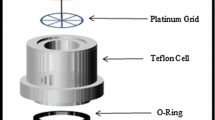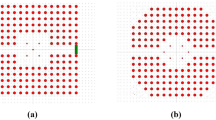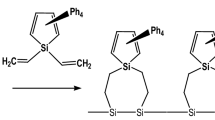Abstract
Fuel adulteration is a very common practice in several countries around the world. This paper reports the use of porous silicon as a sensor for the detection of adulteration of petrol and diesel by kerosene. Porous silicon has some very useful properties such as high sensitivity, small size, high surface-to-volume ratio, bio-compatibility and compatibility with silicon IC technology which make it suitable for sensing purposes. The main objective of this work is to develop an optical sensor to detect the level of adulteration in a fuel sample using a porous silicon microcavity (PSMC). Reflectance measurements are used to detect the concentration of kerosene, which is the most commonly used adulterant for petrol and diesel, in the fuel sample. The core principle on which the sensing is based is that a change in the effective refractive index of the microstructure due to the introduction of the fuel in the pores leads to a change in the reflectance spectrum of the structure. The same sensor is used for the detection of adulteration in petrol as well as in diesel. The sensing process is reversible, thus making the sensor reusable.
Similar content being viewed by others
References
Uhlir A (1956) Electrolytic shaping of germanium and silicon. Bell Syst Tech J 35(2):333–347
Canham LT (1990) Silicon quantum wire array fabrication by electrochemical and chemical dissolution of wafers. Appl. Phys. Lett. 57(10):1046–1048
Aspnes D, Theeten J, Hottier F (1979) Investigation of effective-medium models of microscopic surface roughness by spectroscopic ellipsometry. Phys Rev B 20(8):3292
Arenas MC, Vega M, Martínez O Salinas OH nanocrystalline porous silicon: structural, optical, electrical and photovoltaic properties
Hu J, Wu P, Deng D, Jiang X, Hou X, Lv Y (2013) An optical humidity sensor based on CdTe nanocrystals modified porous silicon. Microchem J 108:100–105
Yan D, Hu M, Li S, Liang J, Wu Y, Ma S (2014) Electrochemical deposition of ZnO nanostructures onto porous silicon and their enhanced gas sensing to NO2 at room temperature. Electrochim Acta 115:297–305
Cho So-Yeon et al. (2013) Rugate-structured free-standing porous silicon-based fiber-optic sensor for the simultaneous detection of pressure and organic gases. Sensors Actuators B Chem 183:428–433
Li J, Sailor MJ (2014) Synthesis and characterization of a stable, label-free optical biosensor from TiO2 -coated porous silicon. Biosens Bioelectron 55:372–378
Krismastuti FS, Pace S, Voelcker NH (2014) Porous silicon resonant microcavity biosensor for matrix metalloproteinase detection. Advanced functional materials
Naveas N, Hernandez-Montelongo J, Pulido R, Torres-Costa V, Villanueva-Guerrero R, García Ruiz JP, Manso-Silván M (2014) Fabrication and characterization of a chemically oxidized-nanostructured porous silicon based biosensor implementing orienting protein A. Colloids Surf B: Biointerfaces 115:310–316
Agostini CA (2010) Differential fuel taxes and their effects on automobile demand. Cepal Rev 102:101–111
Parivesh (2014) Consequences of fuel adulteration. Central pollution control board (CPCB)
Roy S (1999) Fiber optic sensor for determining adulteration of petrol and diesel by kerosene. Sensors Actuators B Chem 55(2):212–216
Mishra V, Jain SC, Singh N, Poddar G, Kapur P (2008) Fuel adulteration detection using long period fiber grating sensor technology. J Sci Ind Res (JSIR) 46(2):106–110
Patel P, Mishra V, Panchal A (2012) Nano porous silicon microcavity optical biosensor device for glucose detection. Digest Journal of Nanomaterials and Biostructures (DJNB) 7(3):973–982
Patel P, Mishra V, Panchal A (2012) Theoretical and experimental study of nanoporous silicon photonic microcavity optical sensor devices. Advances in Natural Sciences: Nanoscience and Nanotechnology 3(3):035016
Patel P, Mishra V, Maniya N, Panchal A (2013) Optical sensing of ethanol using porous silicon photonic bandgap microcavity structure. J Int Acad Phys Sci 16(3)
Granitzer P, Rumpf K (2010) Porous silicon—a versatile host material. Materials 3(2):943–998
Patel P, Mishra V, Panchal A, D’Cruz J (2013) Nanoscale porous silicon photonic microcavity structures for optical sensing of ethanol. Armenian J Phys 6(2)
Min H-K, Yang H-S, Cho SM (2000) Extremely sensitive optical sensing of ethanol using porous silicon. Sensors Actuators B Chem 67(1):199–202
Author information
Authors and Affiliations
Corresponding author
Rights and permissions
About this article
Cite this article
Mishra, V., Tiwari, V. & Patel, P. Nanoporous Silicon Microcavity Based Fuel Adulteration Sensor. Silicon 8, 409–415 (2016). https://doi.org/10.1007/s12633-015-9311-x
Received:
Accepted:
Published:
Issue Date:
DOI: https://doi.org/10.1007/s12633-015-9311-x




